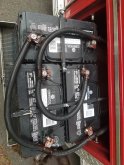D
Deleted member 1888
Guest
Im looking to make my own DIY Bus Bar that can pull 1000amps as buying one is expensive. Im looking to use it to connect a large battery banks. Can this be dune with supplies from hardware stores? Anyone know a good way to make on and what parts to use?
The only one I can buy is this
The only one I can buy is this
Amazon.com: Blue Sea Systems PowerBar 1000 Stud with Cover, 12 x 5/16": Sports & Outdoors
Buy Blue Sea Systems PowerBar 1000 Stud with Cover, 12 x 5/16": Connectors & Adapters - Amazon.com ✓ FREE DELIVERY possible on eligible purchases
www.amazon.com





